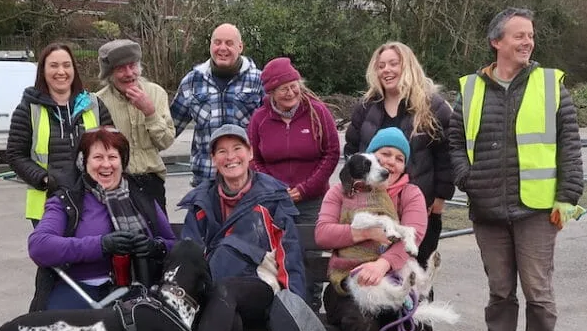Calling Up A Conservation Corps

Many of our towns and cities are located in biodiversity-rich areas – beside a river, along the coastline or on a floodplain – where the abundance of life favoured the location for settlement. With deliberate care and integration, these native ecosystems can be conserved within the town or city, to the benefit of local residents.
The idea of urban conservation across a wide metropolitan area has been formalised in the concept of a “National Park City” whereby a city is managed and protected by formal and informal means to enhance its living landscape. London is a good example of a city that is working hard on becoming a National Park City, with a goal of becoming 50 percent green space by 2050.
London is building on firm foundations, as the statistics tell. Greater London covers nearly 1,600 square km, of which 47 percent is physically green. Nearly 20 percent is made up of private gardens and there are 3,000 parks. The total length of streams, rivers and canals is more than 850km, many of which are accessible by footpaths. London’s natural habitats include large areas of ancient woodland, meadows, heath and common, as well as ancient deer parks and recently created wetlands. The total amount of natural habitat already protected by nature conservation designations amounts to nearly 20 percent of Greater London.
However, London faces challenges. Its population is expected to increase by two million by 2040, to eleven million. It will need to build thousands more homes while preserving existing natural habitats and restoring others. Hence the defining feature of a National Park City: the widespread and significant commitment and support of residents and decision-makers. Unless local residents defend green spaces that come under commercial pressures, or advocate growing them in the face of budget cuts and construction projects, they wither away.
Encouragingly, there are countless environmental volunteer projects in London and in many other cities across the country. They are improving urban neighbourhoods in different ways, from restoring brownfield land to conserving water to improving air quality; from leading programs that turn “grey” space into green space to encouraging community tree planting to lifting paving in driveways or replacing garden decking with grass.
City residents and entrepreneurs are also taking the initiative locally to produce food, with innovative approaches to urban agriculture from allotments to planting fruit and vegetables on rooftops. Some residents have gone further by growing these grassroots community projects into movements, such as the Transition Network, with its aim of increasing self-sufficiency and building resilience in every town or city through transition initiatives such as local food production.
Against this backdrop, we are moving from the coronavirus crisis into a national recession. On the one hand there is now a huge furloughed workforce paid for by the government, with limited prospects for some of returning to their previous work. On the other hand, conservation and nature-based solutions are vital elements of local councils’ climate action plans, but they do not have the arms and legs to make it happen with the urgency required.
The Civilian Conservation Corps (CCC) was a work relief program that gave millions of young men in the U.S.A. employment on environmental projects during the Great Depression. Considered by many to be one of the most successful of Roosevelt’s New Deal programs, the CCC planted more than three billion trees and constructed trails and shelters in more than 800 parks nationwide during its nine years of existence. It’s an example that advocates of a Green New Deal for the U.K. like to highlight, with the caveat that a contemporary Green New Deal conservation corps would also have a clear focus on climate change mitigation and adaptation.
Over two-thirds of primary councils across the country (almost 280 to date) have already declared an environment and climate emergency. On the frontline of the current social, economic and climate crises, they do not have the luxury of choosing between these emergencies. The coronavirus crisis is a catalyst for more decentralisation – for helping people and communities locally become more self-sufficient and resilient. It is not difficult to imagine formalising a similar civic conservation corps to the CCC, staffed by thousands of furloughed employees who unfortunately cannot return to their former jobs, deployed locally, directed and mobilised by local councils with Local Climate Action plans ready to implement.
Originally published on LinkedIn on June 8, 2020.
Photo by Johannes Plenio on Unsplash.
Recommended from Carbon Copy
-

Copy These! 5 Big Local Ideas About Using Decentralised Energy
Communities around the UK are generating their own electricity - through solar, hydro and wind. But how can they ensure…
-
 Affordable Energy, Buildings & Places, Climate Action, Good Food, Greater Fairness, Health & Wellbeing, Less Waste, More Jobs, Strong Communities
Affordable Energy, Buildings & Places, Climate Action, Good Food, Greater Fairness, Health & Wellbeing, Less Waste, More Jobs, Strong CommunitiesCopy These! 5 Big Local Ideas About Creating A Community Hub
Learn how communities are reinvigorating once-forgotten spaces, to bring local environmental, social and economic benefits.
-

Are Cows Worse Than Cars?
Which is the bigger contributor to climate warming: cows or cars? To answer this question properly, it helps to break…
-

Carbon.Copy.
We are natural born copiers. It’s something all of us do, all the time. Our collective power comes from how…